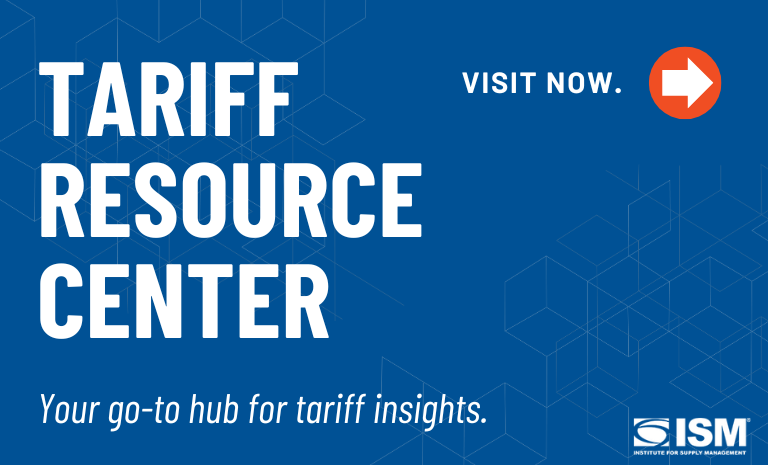Answering Tariffs Challenges with Tech, Tactics and Planning

With tariffs uncertainty and volatility likely to persist, what steps can supply managers take? How can technology help?
Three experts weigh in:
- Rohit Tripathi, vice president of industry strategy, manufacturing at Relex, a demand forecasting and supply chain solutions provider
- Helaine Rich, vice president of strategic sales and administration at ePost Global, an international parcel and mail shipping solutions company in Boynton Beach, Florida
- Jackson Wood, director of industry strategy, global trade intelligence at Descartes Systems Group, a global supply chain and logistics software provider based in Waterloo, Ontario.
This is the second of a two-part series featuring their insights. The first article appeared last week.
Question: How is technology being used to model scenarios or guide decision-making?
Wood: Platforms that can consume and use global trade data can run simulations of supply chain changes or tariff rates to better support internal decision-making. For example, supply chain managers can model the impacts of expanded U.S. tariffs (such as the August 1 implementation of reciprocal duties on over 60 countries, August 7 start of India-specific tariffs and the universal copper tariff, and the October 15 expiration of the U.S.-China tariff truce) to help stay ahead of regulatory changes and to make informed sourcing and pricing decisions, aligning with real-time tariff rate fluctuations.
Tripathi: Forward-thinking companies are treating tariff planning like they treat demand forecasting, with scenario modeling and decision intelligence tools that can run in real time leveraging artificial intelligence (AI) address not just predictive and probabilistic modeling capabilities in supply chain decision making but also bring in generative AI to enable planners and business users to have ease of access to these decisions.
Instead of waiting for a policy to be finalized, they’re asking: What would it cost us if an X-percent tariff went into effect next quarter? How should we adjust our mix or pricing to protect margin? These aren’t academic questions anymore. Technology, specifically AI, now enables teams to model landed cost, lead time, and availability together — not in silos. That’s the future of supply chain planning.
Rich: Technology is critical. Tools like landed cost calculators and harmonized system (HS) code classification application programming interfaces (API) are helping companies gain a clearer picture of their total import costs and prevent delays. At ePost Global, we work closely with clients to implement these tools, ensuring accurate product classification and smoother customs clearance.
HS codes, for instance, have long been a requirement, but many merchants overlooked it. With upcoming enforcement changes, accuracy is vital. If an incorrect code is assigned, companies could face higher duties and taxes.
Q: What strategies should supply chain managers consider?
Wood: Supply chain managers can consider strategies that build greater flexibility into their supply chains. Options to explore include diversifying their supply base and evaluating tools like foreighn trade zones (FTZs) to blunt the impact of tariff volatility, as well as those we discussed last week.
Tripathi: Tariff volatility underscores the importance of proactive planning. Supply chain leaders should prioritize scenario modeling and stress testing, so they’re not caught off guard if policies shift suddenly. That includes not only modeling cost impacts but also how those shifts would affect availability and service levels.
Contractual flexibility, in both sourcing and transportation, is another critical area. And finally, this is a moment to revisit cross-functional alignment. Decisions around sourcing, pricing, and procurement can no longer be made in silos. Visibility, collaboration and agility across functions are essential.
Finally, the ability to dynamically do scenario planning to address the various “what if” scenarios that arise from the supply chain changes and take advantage of the emerging AI capabilities to elevate the role of the supply chain manager to be the strategic decision maker, leaving AI to do the grunt work.
Rich: First, know your product: origin, HS code and value. Second, look into registering for Import One-Stop Shop (IOSS) or Value Added Tax (VAT) in key markets to avoid destination-handling fees. And finally, plan ahead. Some companies are moving peak-season inventory early to get ahead of possible tariff hikes and avoid holding high-cost stock too long.

